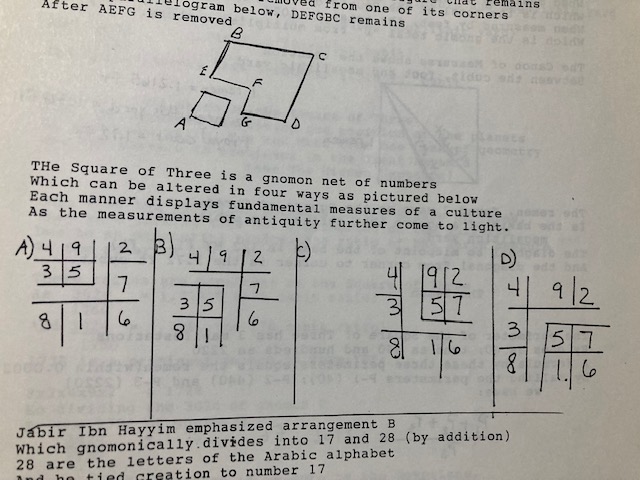A magic square bonanza comes with corners and gnomons on the 3 x 3 magic square. Understanding this concept leads to enlightenment and knowledge about where many ancient measures came from by number. Such a view explains incredible mysteries about what’s hidden in the Great Pyramid of Egypt. The square of three (as opposed to three squared) provides a basic net of numbers which can be altered or divided in four traditional ways as pictured below. The consequences are quite dramatic and will be shown in future posts.

Gnomically dividing the three x three magic square was both a custom and important aspect of the Arabic school of Jabir Ibn Hayyim. Jabir (known as Geber in western history). He is mostly known for his contributions to chemistry. He emphasized systematic experimentation, and did much to free alchemy from superstition and turn it into a science. However, here Jabir traces the use back to Hermes; as Hermes traced the of corners back to Ariel. First, Ariel’s story really begins in Ancient Greece. According to lore, she is a nereid, one of the dozens of daughters of the sea-god Triton.
Who was Hermes? Both in literature and cult Hermes was constantly associated with the protection of cattle and sheep, and he was often closely connected with deities of vegetation, especially Pan and the nymphs. In the Odyssey, however, he appears mainly as the messenger of the gods and the conductor of the dead to Hades. Hermes was also a dream god, and the Greeks offered to him the last libation before sleep. As a messenger, he may also have become the god of roads and doorways, and he was the protector of travellers.
Internal link:
Great Pyramid Magic
Leave a Reply